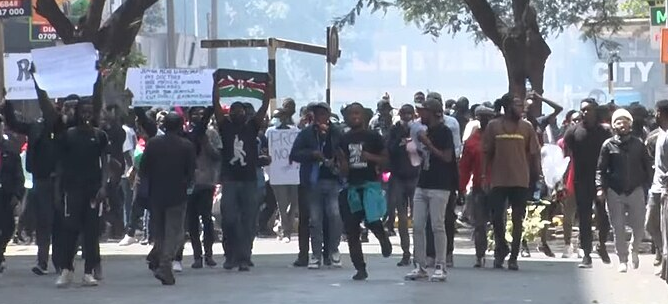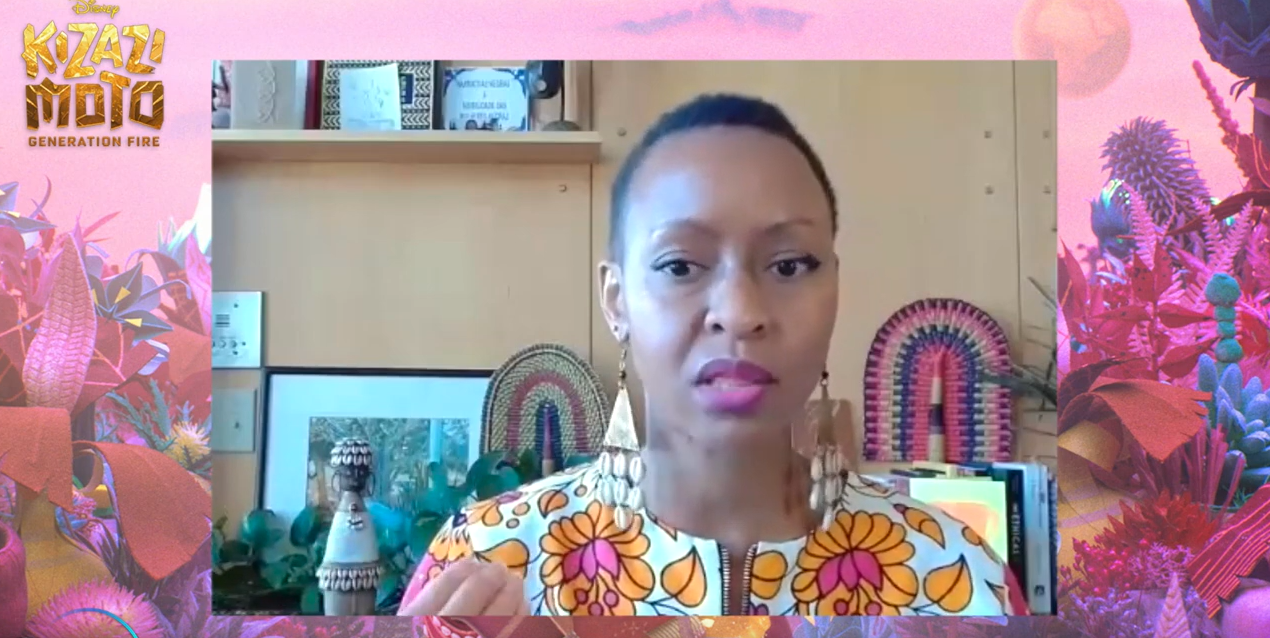Afrobeauty.tv had a chance to speak with legendary playwright Ntozake Shange about a new exhibition celebrating her classic work, for colored girls who have considered suicide/when the rainbow is enuf.
Forty years ago, the St. Louis, Missouri native Ntozake Shange created the first ever “choreo-poem” entitled for colored girls who have considered suicide/when the rainbow is enuf. Debuted in December 1974 in a bar outside of Berkeley, California, Shange performed the play with four other artists. A unique hybrid of poetry in movement was created; “I worked with dancers and took dance classes, and when I would do poetry I would ask dancers to interpret my poetry,” says Shange.
For those who have seen this classic work performed on stage, many say it is life changing. One woman who performed the work as a troubled high school student says it altered her direction in life forever.
“I did the play when I was in high school. I was the Lady in Blue. I was having problems in school and I lived and breathed that play, practiced it day and night. I knew I couldn’t be in the play if I wasn’t in school, so it kept me from dropping out. That’s the effect that Shange’s work has had on my life.”
The script became a self-fulfilling prophecy: “I was a small town girl with big dreams of being an actress and don’t you know I ended up living in Harlem and experiencing much of what my character did in the play? In the end of the play, to hear it say ‘i found god in myself/and i loved her’ rocked my entire universe. Nothing was ever the same after that.”
The script became a self-fulfilling prophecy: “I was a small town girl with big dreams of being an actress and don’t you know I ended up living in Harlem and experiencing much of what my character did in the play? In the end of the play, to hear it say ‘i found god in myself/and i loved her’ rocked my entire universe. Nothing was ever the same after that.”
The choreo-poem’s themes delves deep into experiences of African American women (“colored” women who are only identified by the colors they wear, one for each of the seven colors of the rainbow) with graphic poignancy, haunting humor, and tear-jerking emotion. Harlemites and others will be in a for real treat to experience the 40 year anniversary of this innovative internationally critically acclaimed work. The exhibition, entitled i found god in myself, opened on Friday September 19th at the Schomburg Center For Research in Black Culture, a division of the New York Public Library and will run in the Schomburg’s Latimer/Edison galley until January 3, 2015. The public has heard the poems and seen them performed on stage, and even adapted for the silver screen via Tyler Perry’s film rendition of the same work For Colored Girls. Now they’ll be able to see it represented in a visual art form through twenty specially-commissioned visual pieces by local artists, including Renee Cox, Rafia Santana, Margaret Rose Vendryes, Dianne Smith and Kimberly Mayhorn. Each were charged with creating a specific piece for one of the 20 poems from the play.
Curator and “cultural tastemaker” Souleo felt it would be fitting to revisit this piece for it’s 40 year anniversary because of it’s relevancy, and it was a powerful way for the Schomburg to begin their fall programming. He approached Shange with the idea and she enthusiastically signed on. “So much of Shange’s language is visual” says Souleo.
Why has this work stood the test of time? Besides it being so unique, The stories for the choreo-poem came from living life, friends stories, and Shange’s personal experiences. There is a more global reason as well: “In the past 40 years our situation has become more tenuous, crime against women has gone up, poverty among women has gone up, we are in a reproductive rights challenge…its the times that makes the work resonate, ” Shange explains.
Shange is thrilled to have the arts community come and support her during her golden years. “I thought it would be the perfect conclusion to my career,” Shange adds. “I’m excited and honored by the Schomburg because they’ve honored so many of my heroes like Langston Hughes, and to be included in that same pantheon is amazing.”
Blending the classic with the contemporary, archival material will be displayed following the play from it’s humble beginnings in California to its run on Broadway. In addition to the exhibition showing at the Schomburg, two satellite galleries, the Sol Studio and La Maison d’Art also in Harlem, will be showing existing works speaking on immigration, women in economy, the missing girls in Nigeria and transgender issues. These works in smaller spaces helps to open up the conversation among members of the community.
“What Afrobeauty means to me is to draw upon our ancient as well as contemporary strengths as far as our intelligence, creativity, and our perseverance.”
-Ntozake Shange
“We wanted to show that archival materials related to Shange’s work and contemporary art could co-exist seamlessly in the space,” says Souleo.
Go to http://www.artcrawlharlem.com/ for more information on the exhibition, and below, find dates to the other events at the satellite galleries:
Wednesday, Sept. 3 at 6pm
La Maison d’Art
259 West 132nd Street
***
Wednesday, Sept. 10 at 6pm
The Sol Studio
2073 7th Avenue
The Schomburg will also be hosting two exhibit-related public programs to further commemorate the fortieth anniversary of for colored girls who have considered suicide/when the rainbow is enuf:
October 15th at 6:30pm
Special panel discussion and Q&A with Ntozake Shange
November 20th at 6:30pm
Talks at the Schomburg: For Colored Girls
On October 24th, “lost in language and sound” will premiere at 651 Arts in Brooklyn. The piece is based on Shange’s book of the same title, a choreo-essay using a 12 piece ensemble of performers.
This article was first published on www.afrobeauty.tv. For a gallery of images from the exhibit click here.
Photo caption:
Exhibition artists flock writer Ntozake Shange at opening reception of “i found god in myself:” the 40th anniversary of Ntozake Shange’s for colored girls at the Schomburg Center. September 17, 2014. L to R: SOL’SAX, Pamela Council, Uday K. Dhar, Dianne Smith, Kathleen Granados, Melissa Calderon, Arlene Rush, designer Marco Hall, Kimberly Mayhorn, Nona Faustine, Michael Paul Britto, Beata Drozd. Center: Exhibit curator Souleo and Ntozake Shange (credit: Robert Gore)






